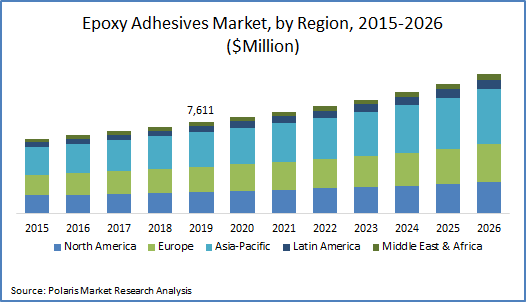The Sensitive Compartmented Information Facility market is expected to reach $7.54 billion by 2032, with a CAGR of 7.7%.
𝐓𝐡𝐞 𝐠𝐥𝐨𝐛𝐚𝐥 𝐬𝐞𝐧𝐬𝐢𝐭𝐢𝐯𝐞 𝐜𝐨𝐦𝐩𝐚𝐫𝐭𝐦𝐞𝐧𝐭𝐞𝐝 𝐢𝐧𝐟𝐨𝐫𝐦𝐚𝐭𝐢𝐨𝐧 𝐟𝐚𝐜𝐢𝐥𝐢𝐭𝐲 𝐦𝐚𝐫𝐤𝐞𝐭 𝐬𝐢𝐳𝐞 𝐢𝐬 𝐩𝐫𝐨𝐣𝐞𝐜𝐭𝐞𝐝 𝐭𝐨 𝐠𝐫𝐨𝐰 𝐚𝐭 𝐚 𝐂𝐀𝐆𝐑 𝐨𝐟 7.7% 𝐟𝐫𝐨𝐦 2024 𝐭𝐨 2032, 𝐚𝐜𝐜𝐨𝐫𝐝𝐢𝐧𝐠 𝐭𝐨 𝐚 𝐧𝐞𝐰 𝐫𝐞𝐩𝐨𝐫𝐭 𝐩𝐮𝐛𝐥𝐢𝐬𝐡𝐞𝐝 𝐛𝐲 𝐏𝐨𝐥𝐚𝐫𝐢𝐬 𝐌𝐚𝐫𝐤𝐞𝐭 𝐑𝐞𝐬𝐞𝐚𝐫𝐜𝐡. 𝐓𝐡𝐞 𝐫𝐞𝐬𝐞𝐚𝐫𝐜𝐡 𝐫𝐞𝐯𝐞𝐚𝐥𝐬 𝐭𝐡𝐚𝐭 𝐭𝐡𝐞 𝐦𝐚𝐫𝐤𝐞𝐭 𝐰𝐚𝐬 𝐯𝐚𝐥𝐮𝐞𝐝 𝐚𝐭 𝐔𝐒𝐃 4157.46 𝐦𝐢𝐥𝐥𝐢𝐨𝐧 𝐢𝐧 2024 𝐚𝐧𝐝 𝐢𝐬 𝐞𝐱𝐩𝐞𝐜𝐭𝐞𝐝 𝐭𝐨 𝐫𝐞𝐚𝐜𝐡 𝐔𝐒𝐃 7542.52 𝐦𝐢𝐥𝐥𝐢𝐨𝐧 𝐛𝐲 2032.
𝐒𝐞𝐧𝐬𝐢𝐭𝐢𝐯𝐞 𝐂𝐨𝐦𝐩𝐚𝐫𝐭𝐦𝐞𝐧𝐭𝐞𝐝 𝐈𝐧𝐟𝐨𝐫𝐦𝐚𝐭𝐢𝐨𝐧 𝐅𝐚𝐜𝐢𝐥𝐢𝐭𝐲 𝐌𝐚𝐫𝐤𝐞𝐭 𝐏𝐫𝐨𝐟𝐢𝐥𝐞:
A sensitive compartmented information facility is an enduring or interim secure spot where confidential substances can be utilized, reserved, electronically processed, or conversed. A repository SCIF is a compact magnitude secure potential homogenous in motivation to a traditional SCIF, but it can be conveyed utilizing conventional procedures.
𝐃𝐨𝐰𝐧𝐥𝐨𝐚𝐝 𝐅𝐫𝐞𝐞 𝐒𝐚𝐦𝐩𝐥𝐞 𝐏𝐃𝐅 𝐂𝐨𝐩𝐲 𝐨𝐟 𝐭𝐡𝐞 𝐑𝐞𝐩𝐨𝐫𝐭:
https://www.polarismarketresearch.com/industry-analysis/sensitive-compartmented-information-facility-market/request-for-sample
𝐂𝐨𝐦𝐩𝐞𝐭𝐢𝐭𝐢𝐯𝐞 𝐋𝐚𝐧𝐝𝐬𝐜𝐚𝐩𝐞:
Spearheading market contenders are also venturing into an assortment of deliberate activities to augment their global footprint with crucial market advancements involving contemporary product instigations, legitimate agreements, mergers and acquisitions, escalated funding, and alliances with alternate firms.
𝐓𝐡𝐞 𝐬𝐞𝐧𝐬𝐢𝐭𝐢𝐯𝐞 𝐜𝐨𝐦𝐩𝐚𝐫𝐭𝐦𝐞𝐧𝐭𝐞𝐝 𝐢𝐧𝐟𝐨𝐫𝐦𝐚𝐭𝐢𝐨𝐧 𝐟𝐚𝐜𝐢𝐥𝐢𝐭𝐲 𝐦𝐚𝐫𝐤𝐞𝐭 𝐤𝐞𝐲 𝐩𝐥𝐚𝐲𝐞𝐫𝐬 𝐢𝐧𝐜𝐥𝐮𝐝𝐞:
• Balfour Beatty, Inc.
• Captor Corporation
• Clark Construction Group
• Lockheed Martin
• Honeywell International Inc.
• SCIF Global Technologies
• SCIF Solutions, Inc.
• Kratos Defense & Security Solutions, Inc.
• General Dynamics Information Technology, Inc.
𝐑𝐞𝐪𝐮𝐞𝐬𝐭 𝐟𝐨𝐫 𝐚 𝐃𝐢𝐬𝐜𝐨𝐮𝐧𝐭 𝐨𝐧 𝐭𝐡𝐢𝐬 𝐑𝐞𝐩𝐨𝐫𝐭 𝐁𝐞𝐟𝐨𝐫𝐞 𝐏𝐮𝐫𝐜𝐡𝐚𝐬𝐞:
https://www.polarismarketresearch.com/industry-analysis/sensitive-compartmented-information-facility-market/request-for-discount-pricing
𝐀𝐭𝐭𝐫𝐢𝐛𝐮𝐭𝐞𝐬 𝐏𝐮𝐬𝐡𝐢𝐧𝐠 𝐒𝐞𝐧𝐬𝐢𝐭𝐢𝐯𝐞 𝐂𝐨𝐦𝐩𝐚𝐫𝐭𝐦𝐞𝐧𝐭𝐞𝐝 𝐈𝐧𝐟𝐨𝐫𝐦𝐚𝐭𝐢𝐨𝐧 𝐅𝐚𝐜𝐢𝐥𝐢𝐭𝐲 𝐌𝐚𝐫𝐤𝐞𝐭 𝐆𝐫𝐨𝐰𝐭𝐡:
𝐆𝐨𝐯𝐞𝐫𝐧𝐦𝐞𝐧𝐭’𝐬 𝐄𝐬𝐜𝐚𝐥𝐚𝐭𝐢𝐧𝐠 𝐃𝐞𝐟𝐞𝐧𝐬𝐞 𝐁𝐮𝐝𝐠𝐞𝐭: The government’s escalated defense and reasoning disbursing as an answer to escalating geopolitical anxiety is pushing the demand for sensitive compartmented information facilities to manage confidential details firmly. Additionally, progressions in safe interaction arrangements, ciphering, and inspection technologies are pushing the potential of sensitive compartmented information facilities.
𝐆𝐫𝐨𝐰𝐢𝐧𝐠 𝐑𝐞𝐦𝐨𝐭𝐞 𝐖𝐨𝐫𝐤 𝐌𝐨𝐝𝐞𝐥𝐬: The growing aggregate of firms worldwide and the universal acquisition of distant work models is boosting market growth. Further, the growing consciousness of information safety is pushing the acquisition of SCIFs in private boroughs such as finance, healthcare and condemning framework.
𝐆𝐫𝐨𝐰𝐢𝐧𝐠 𝐂𝐲𝐛𝐞𝐫𝐬𝐞𝐜𝐮𝐫𝐢𝐭𝐲 𝐌𝐞𝐧𝐚𝐜𝐞𝐬: The growing aggregate of cybersecurity menaces is propelling the market growth. For instance, the 2023 yearly data violation report underscored a 78% surge in data agreements in 2023 as contrasted to 2022, establishing a contemporary record for ITRC and constituting a 72% escalation from the former high in 2021.
𝐄𝐱𝐩𝐚𝐧𝐬𝐢𝐨𝐧 𝐨𝐟 𝐔𝐫𝐛𝐚𝐧 𝐀𝐫𝐞𝐚𝐬: The augmentation of urban areas and condemning framework projects, particularly in surfacing markets, is playing a notable role in the development of the market. Speedy urbanization and framework augmentation in the regions have escalated the requirement to safeguard planned strengths such as government structures, data centers, and military induction, which contain susceptible details important to national safety and economic steadiness, which are contributing to sensitive compartmented information facility market CAGR.
𝐒𝐞𝐠𝐦𝐞𝐧𝐭𝐚𝐭𝐢𝐨𝐧 𝐎𝐯𝐞𝐫𝐯𝐢𝐞𝐰:
The report divides the global sensitive compartmented information facility market on the basis of type, construction type, end user, and region.
By type, the permanent SCIFs segment held the largest sensitive compartmented information facility market share due to the growing requirement for enduring, stable solutions in government, military, and reasoning effects.
By end user, the government segment dominated the market, driven by growing pressure on national safety and the safeguarding of confidential information. Governments are also enlarging their reasoning, defense, and cybersecurity functions, all of which need a safe ambiance to guarantee reproving details are safeguarded from uncertified approaches.
𝐈𝐧𝐪𝐮𝐢𝐫𝐞 𝐦𝐨𝐫𝐞 𝐚𝐛𝐨𝐮𝐭 𝐭𝐡𝐢𝐬 𝐫𝐞𝐩𝐨𝐫𝐭 𝐛𝐞𝐟𝐨𝐫𝐞 𝐩𝐮𝐫𝐜𝐡𝐚𝐬𝐞:
https://www.polarismarketresearch.com/industry-analysis/sensitive-compartmented-information-facility-market/inquire-before-buying
𝐆𝐞𝐨𝐠𝐫𝐚𝐩𝐡𝐢𝐜𝐚𝐥 𝐒𝐩𝐫𝐞𝐚𝐝:
Based on region, North America dominated the sensitive compartmented information facility market because of escalated government funding to protect condemning details. The U.S. government, as an answer to surging cybersecurity menaces and reasoning probabilities, has categorized the advancement and sustenance of SCIFs to safeguard national safety engrossment.
𝐒𝐞𝐠𝐦𝐞𝐧𝐭𝐚𝐥 𝐎𝐮𝐭𝐥𝐨𝐨𝐤:
𝐒𝐞𝐧𝐬𝐢𝐭𝐢𝐯𝐞 𝐂𝐨𝐦𝐩𝐚𝐫𝐭𝐦𝐞𝐧𝐭𝐞𝐝 𝐈𝐧𝐟𝐨𝐫𝐦𝐚𝐭𝐢𝐨𝐧 𝐅𝐚𝐜𝐢𝐥𝐢𝐭𝐲 𝐁𝐲 𝐓𝐲𝐩𝐞 𝐎𝐮𝐭𝐥𝐨𝐨𝐤:
• Permanent SCIFs
• Temporary SCIFs
𝐒𝐞𝐧𝐬𝐢𝐭𝐢𝐯𝐞 𝐂𝐨𝐦𝐩𝐚𝐫𝐭𝐦𝐞𝐧𝐭𝐞𝐝 𝐈𝐧𝐟𝐨𝐫𝐦𝐚𝐭𝐢𝐨𝐧 𝐅𝐚𝐜𝐢𝐥𝐢𝐭𝐲 𝐁𝐲 𝐂𝐨𝐧𝐬𝐭𝐫𝐮𝐜𝐭𝐢𝐨𝐧 𝐓𝐲𝐩𝐞 𝐎𝐮𝐭𝐥𝐨𝐨𝐤:
• New Construction
• Retrofit and Upgrades
𝐒𝐞𝐧𝐬𝐢𝐭𝐢𝐯𝐞 𝐂𝐨𝐦𝐩𝐚𝐫𝐭𝐦𝐞𝐧𝐭𝐞𝐝 𝐈𝐧𝐟𝐨𝐫𝐦𝐚𝐭𝐢𝐨𝐧 𝐅𝐚𝐜𝐢𝐥𝐢𝐭𝐲 𝐁𝐲 𝐄𝐧𝐝-𝐮𝐬𝐞𝐫 𝐎𝐮𝐭𝐥𝐨𝐨𝐤:
• Government
• Military & Defense
• Telecommunication
• Cybersecurity Firms
• Others
𝐒𝐞𝐧𝐬𝐢𝐭𝐢𝐯𝐞 𝐂𝐨𝐦𝐩𝐚𝐫𝐭𝐦𝐞𝐧𝐭𝐞𝐝 𝐈𝐧𝐟𝐨𝐫𝐦𝐚𝐭𝐢𝐨𝐧 𝐅𝐚𝐜𝐢𝐥𝐢𝐭𝐲 𝐁𝐲 𝐑𝐞𝐠𝐢𝐨𝐧𝐚𝐥 𝐎𝐮𝐭𝐥𝐨𝐨𝐤:
• North America (U.S., Canada)
• Europe (France, Germany, UK, Italy, Netherlands, Spain, Russia)
• Asia Pacific (Japan, China, India, Malaysia, Indonesia. South Korea)
• Latin America (Brazil, Mexico, Argentina)
• Middle East & Africa (Saudi Arabia, UAE, Israel, South Africa)
𝐁𝐫𝐨𝐰𝐬𝐞 𝐌𝐨𝐫𝐞 𝐑𝐞𝐬𝐞𝐚𝐫𝐜𝐡 𝐑𝐞𝐩𝐨𝐫𝐭𝐬:
𝐔𝐫𝐛𝐚𝐧 𝐀𝐢𝐫 𝐌𝐨𝐛𝐢𝐥𝐢𝐭𝐲 𝐌𝐚𝐫𝐤𝐞𝐭:
https://www.polarismarketresearch.com/industry-analysis/urban-air-mobility-market
𝐂𝐨𝐧𝐧𝐞𝐜𝐭𝐞𝐝 𝐀𝐢𝐫𝐜𝐫𝐚𝐟𝐭 𝐌𝐚𝐫𝐤𝐞𝐭:
https://www.polarismarketresearch.com/industry-analysis/connected-aircraft-market
𝐂𝐨𝐦𝐦𝐞𝐫𝐜𝐢𝐚𝐥 𝐄𝐥𝐞𝐜𝐭𝐫𝐢𝐜 𝐀𝐢𝐫𝐜𝐫𝐚𝐟𝐭 𝐌𝐚𝐫𝐤𝐞𝐭:
https://www.polarismarketresearch.com/industry-analysis/commercial-electric-aircraft-market
𝐌𝐢𝐥𝐢𝐭𝐚𝐫𝐲 𝐃𝐫𝐨𝐧𝐞 𝐌𝐚𝐫𝐤𝐞𝐭:
https://www.polarismarketresearch.com/industry-analysis/military-drone-market
𝐄𝐥𝐞𝐜𝐭𝐫𝐢𝐜 𝐀𝐢𝐫𝐜𝐫𝐚𝐟𝐭 𝐦𝐚𝐫𝐤𝐞𝐭:
https://www.polarismarketresearch.com/industry-analysis/electric-aircraft-market




